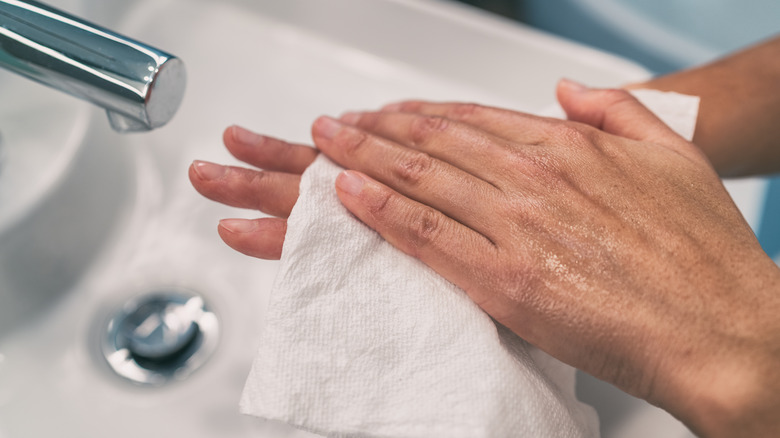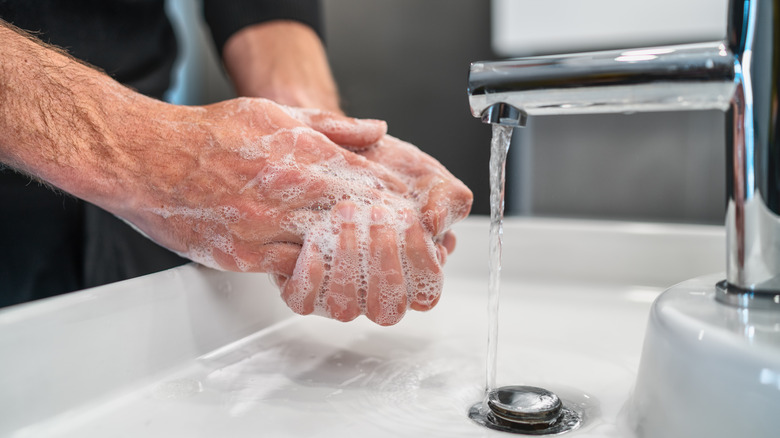How To Treat An Infected Nail
A nail infection, or paronychia, is an infection that affects the skin around the nail. It is usually caused by bacteria, although it can be accompanied by a fungal infection (via the Cleveland Clinic). The condition can develop as a result of a minor injury to the nail, such as a hangnail or cut, allowing the bacteria to enter the skin.
There are two types of nail infections: acute and chronic. The acute form typically occurs within a few hours and is localized to the fold of the nail. It is characterized by redness, swelling, and tenderness around the nail bed. The symptoms, usually don't last longer than six weeks. On the other hand, the chronic form is a long-term infection often caused by a bacterial infection with concurrent fungal infection. The condition tends to develop more gradually and may be linked to various environmental and occupational factors, such as frequent exposure to harsh chemicals.
Nail infection treatments
When treating a bacterial nail infection, Family Doctor advises soaking the affected area in warm water 3-4 times daily, which should help reduce pain and inflammation. In cases where the infection is severe, or there is a large collection of pus, medical attention may be required. A healthcare professional might need to drain the pus and may prescribe oral antibiotics, antifungals, or topical steroids to manage the infection. If prescribed antibiotics, be sure to stick to your doctor's instructions and finish the full course.
To prevent the spread of infection, It is important to practice good hygiene habits, such as regularly washing hands, using gentle soaps, and avoiding biting or picking at nails, advises the Cleveland Clinic. It is also recommended to wear gloves at work, especially when working with chemicals. Generally speaking, early recognition and prompt treatment of nail infection can help prevent complications.
Risk factors for developing a nail infection
Several risk factors can increase the likelihood of developing a nail infection. One of the most common risk factors is having a weakened immune system, per Family Doctor. According to the source, the condition is also more common in people with diabetes, specifically women. In addition, people who bite or pick at their nails are at a higher risk of developing the condition. This is because nail biting or picking can damage the skin around the nail bed, creating an entry point for bacteria or fungi.
Family Doctor also warns that frequent exposure to water can increase the risk of a nail infection. People working in cleaning or food service industries are more likely to be exposed to water and chemicals regularly. Lastly, people taking immunosuppressant medications (for HIV and cancer) are also susceptible to an infection, according to the book "Stat Pearls."



